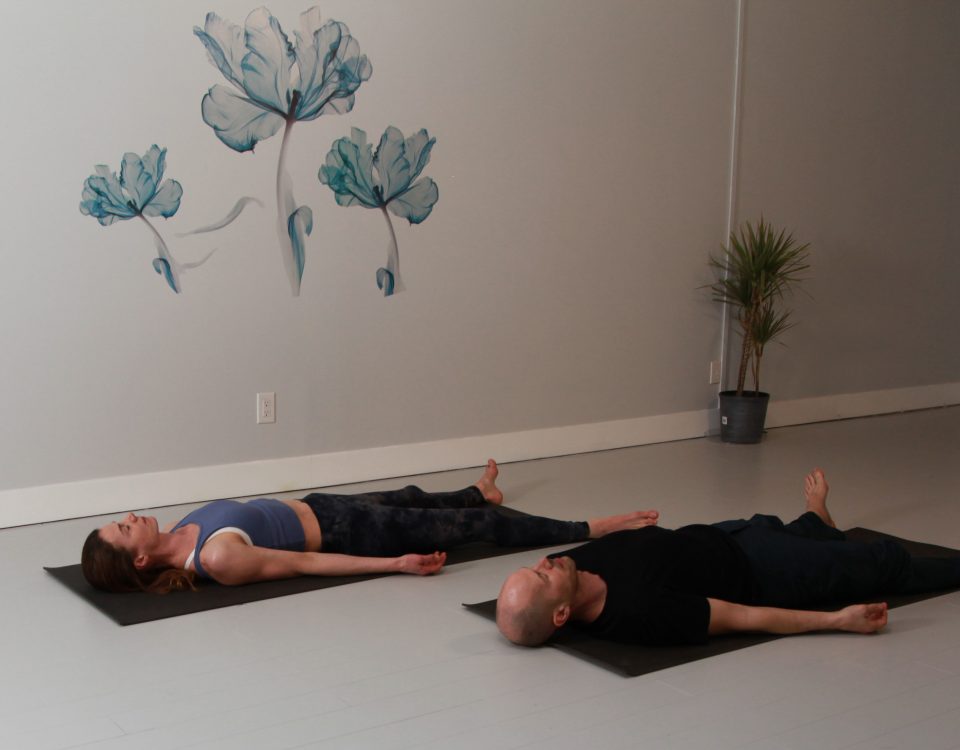I Am The Gift
December 21, 2011Fear and Loathing in Vinyasa
February 8, 2012Om or Ow?
by Karen MacKenzie and Alissa Martin
In last Thursday’s NY Times, author William J. Broad wrote an article about the shadow-side of yoga: the injuries that can occur from the practice. The article is stirring up a lot of discussion in the community, and we wanted to weigh in because we believe it brought up some important points to share… and we care about your well-being!

The Ego and I
The main point of the article is delivered in a quote from yoga instructor Glenn Black, who says “…if you do it with ego or obsession, you’ll end up causing problems.” We couldn’t agree more.
We have all been there. It’s hard not to succumb to thoughts like… “if she/he can bend that way, I could too”, “I did this when I was 11 years old, so I should be able to do this now”, “her meditation practice is much deeper than mine”, etc. The desire to get into advanced postures or to become more “yogic” may surreptitiously take precedence over giving your whole being what it really needs: balance. Over-taxing the body physically can become another form of negative stress. Holding an external goal of how a yogi should lead their life serves nothing but your ego. So examine these thoughts, they are natural and we all have them. Instead of pushing them aside, they are points to explore and question. Ask yourself, “with this thought in mind, am I better able to lead this day well?”
Your Limits
In Hatha Yoga, as with athletic or even simple physical activities, if we attempt to do more than our body agrees with, injuries are more likely to occur. It sounds very obvious, so why do we ignore our body’s intuition?
Your body is unique, and like everything, it has limits. Yoga helps you learn to work with your boundaries and to slowly open up more space in your body. But remember, you have a unique skeletal and muscular structure, and personal history of injuries that need to be respected while on your yoga mat. There are some postures that you may never get into, and that’s OKAY! Personally I will never comfortably wrap my foot behind my head, because it would destabilize my hip joints. We can’t do it all, nor do we need to. Again, ask yourself, “with this pose in my body, am I better able to lead this day well?”
Points to Practice By
Here are a few pointers to bring to your mat
- What are your real priorities in coming to yoga? Be honest with yourself, and try to cultivate good intentions, things that will really benefit you in the long-term. Remind yourself of this when you are on your mat, because your practice will be a consequence of these intentions. And remember, be kind to yourself, and be firm with the pushy voice in your head.
- Work through new postures and new variations slowly. Take time to explore them, to breathe into them, so you can assess whether or not it feels right for your body.
- Listen to your breath. When your body is becoming stressed, your breath will become strained. This is something you can both hear and feel. Back off from the pose slowly, until you reach a place where your breath is free again. Remember you can take a rest in Childs pose or Mountain pose whenever you need.
- You know what feels good for your body better than anyone, that includes the instructor. Yoga can help you build trust in yourself by encouraging you to listen to your intuition.
- Alignment! Alignment Alignment! Flow classes are fun but make sure you attend some slow and steady alignment based Hatha classes (or Yoga 101) to learn correct positioning, so you can move from posture to posture safely.
- Try practicing more with your eyes closed. Hatha Yoga is largely an internal practice, and removing the distractions around you can help you feel the physical and energetic benefits of the postures. It also helps quieten the voice in your head that may be comparing with the mat next to you.
- Talk to your instructor before class, discuss with them any concerns you have about injuries, alignment and your practice in general. Our primary concern is to keep you safe and healthy.
Although stress is a given in daily life, we can learn to manage negative stress better; and Yoga is a practical system to teach us how. A balanced Hatha Yoga practice combines energy releasing tools with energy restoration tools. Remember, Yoga is not a one-directional path towards “challenge”, it is a multilateral web that engages you more fully in your life.
The First Limb of Yoga: The Yamas
Although we may spend a lot of time perfecting our downward facing dogs, yoga is at it’s roots an ethics-based practice. Yoga calls for you to explore your boundaries. But without the first limb of yoga, called the Yamas, the physical posture practice is simply a workout, may even be harmful; and the meditation practice can become self-serving.
Here’s a quick reflection on the Yamas, which we’ll explore in more detail in upcoming blog posts.
The first Yama, and where Yoga begins, is Ahimsa – Non-Harming or Love. We are meant to practice yoga and life with love and reverence.
Satya – Truthfulness. Knowing the difference between your truth and your opinions is important on and off the mat.
Asteya – Non-Stealing or Generosity. This can mean we practice with every part in mind, so as not to steal from one to “feed” another.
Bramacharya – Moderation and Balance. Balancing your strength with softness, activity with rest and challenging yourself with being kind and gentle with yourself.
The final Yama is Aparigraha – Non-Posessiveness or Abundance. This reminds us to see all that we already have instead of striving for what is not yet here or may never be. The more we show gratitude for what is, the more likely we are to receive.




